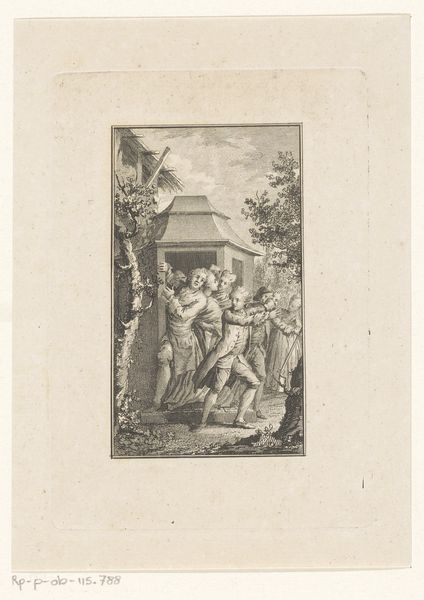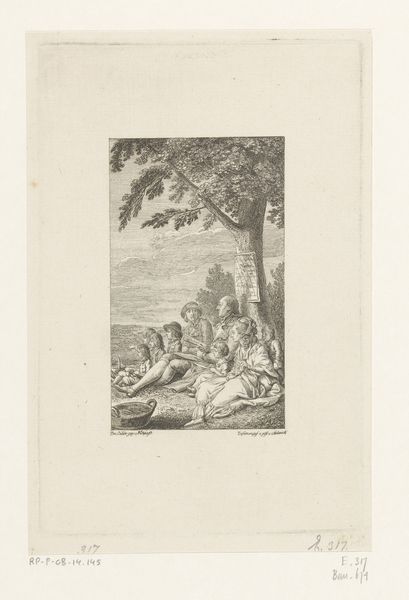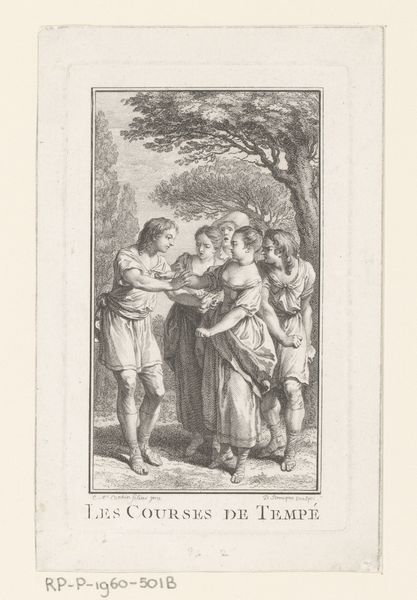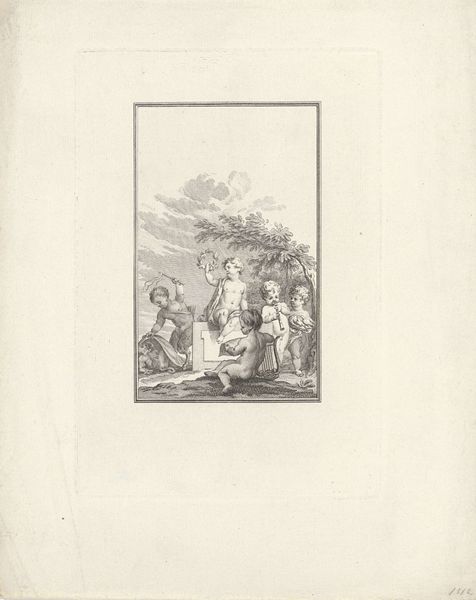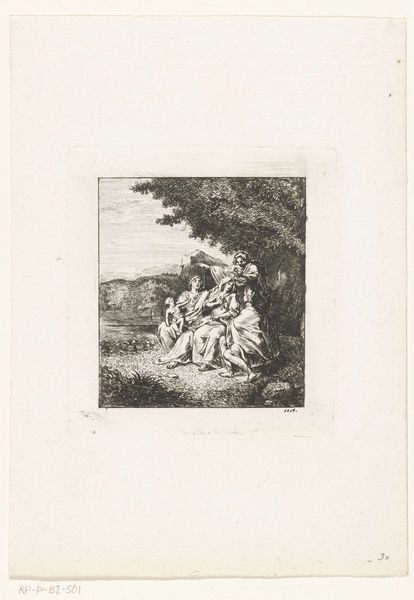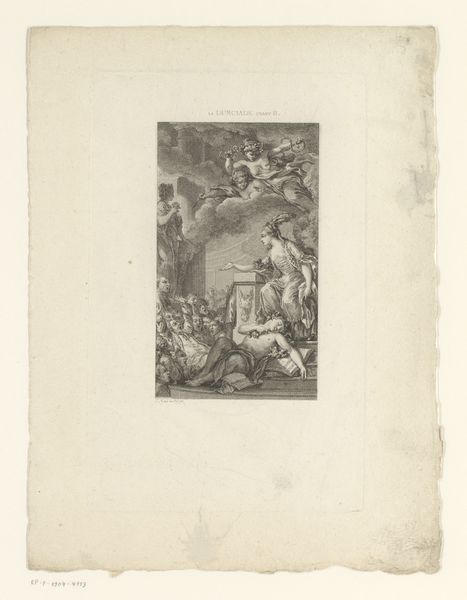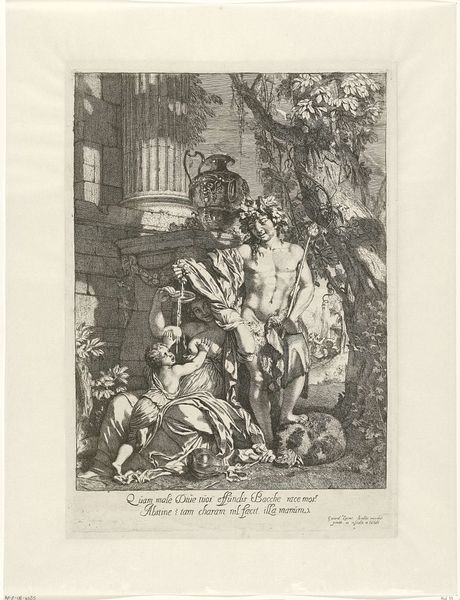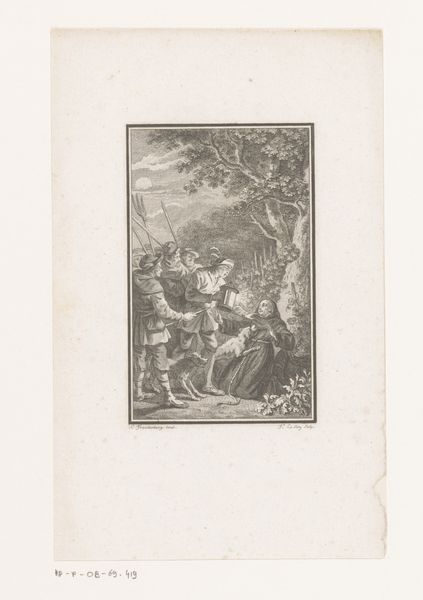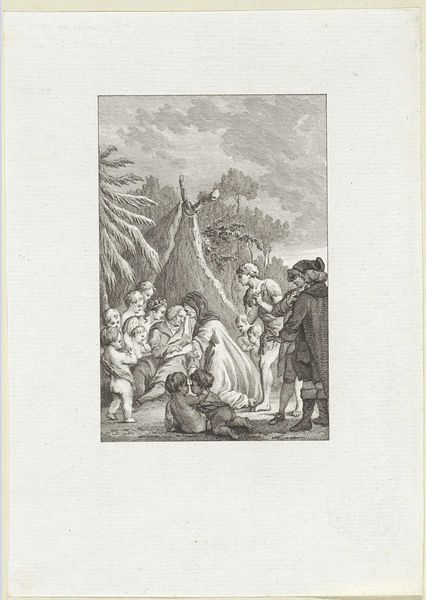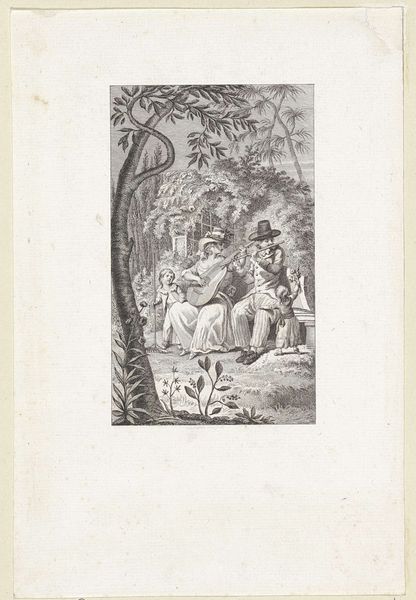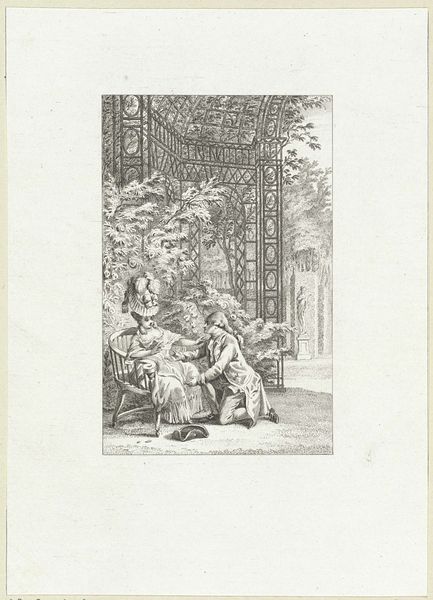
Ontwerp voor titelblad voor: Aloude Staat der Verenigde Nederlanden 1782 - 1784
0:00
0:00
Dimensions: height 218 mm, width 145 mm
Copyright: Rijks Museum: Open Domain
Reinier Vinkeles created this design for a title page around the 18th century. We see an abundance of putti, winged child deities, engaged in various activities amidst classical architecture. These figures, often associated with love and innocence, find their roots in ancient Roman art. They evoke a sense of playfulness. Yet, their presence also hints at deeper symbolic layers. In Renaissance art, putti were often used to bridge the classical past with Christian themes, representing souls or divine love. Consider how these cherubic figures contrast with the gravity of the "Aloude Staat," or ancient state, in the title. The putto motif has undergone a fascinating metamorphosis. From pagan symbols of fertility to Christian representations of purity. Their recurring appearance suggests a collective yearning for an idealized state of innocence. They continue to resonate on a subconscious level, embodying complex emotions and cultural memories. This cyclical recurrence of symbols transcends temporal boundaries, revealing the enduring power of images.
Comments
No comments
Be the first to comment and join the conversation on the ultimate creative platform.
